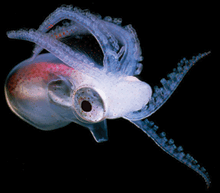 UPDATED BELOW
UPDATED BELOWExperimental plan for the day: Medium-scale periplasm prep test-- to purify double-stranded DNA in the “protected state” (the periplasm).
I have two PCR products: (1) a “good” uptake sequence USS-1, and (2) a “bad” uptake sequence, USS-R . I want to compare their uptake into rec-2 cells, which can bring DNA through the outer membrane, but not the inner membrane. This means that if I can specifically enrich USS-1, but not USS-R--and can see the difference in a gel-- then I’ve got a functioning periplasmic DNA prep. Naturally, it’ll probably take several attempts to get working...
I will use a modification of this paper and see if it nets some DNA where it should be. In outline, I’ll: Add chloroform to washed cell pellets. Soak. Extract periplasm with TE. Clean and concentrate. Run on a gel.
Based on other studies with radiolabeled USS-1 uptake, I expect that for 20 ng added to a 1 ml culture, ~50% will be taken up. To see uptake DNA without radiolabel on a gel and for reasonable controls, I will need larger cultures of competent cells than I aliquoted and froze last week.
Here’s my protocol so far:
1) Defrost two tubes of rec-2 (0.3 OD/ml aliquot) into fresh sBHI@37 (2X25 ml); wait ~2-2.5 hrs.
2) At OD600=0.3 / ml, transfer cells to M-IV by filtration.
3) Incubate 100 min @37 to induce natural competence. (negative control: frozen tube of rec-2 (0.1 OD/ml) into fresh sBHI (25 ml).)
4) Split cultures 2X and incubate with 20ng 222bp PCR fragments (USS-1, USS-R, none) / 1 ml M-IV culture (~10^9 cells) for 15-30 min @37, DNase I, EDTA to kill DNase I and other nucleases. Also add USS-1 to non-competents.
5) Spin, wash pellet 3X PBS, chloroform (20-40ul), incubate 20 min @RT (chloroform pellet DNA extraction?, save washes).
6) Extract with 100-200ul cold TE, proteinase? RNase?, p/c extraction, PCR clean-up column (or ppt?) to concentrate.
7) 1.2% agarose gel. Lanes:
Size standard
USS-1 input (2X dilution)
USS-R input (2X dilution)
rec-2 + USS-1 -> chloroform extract
rec-2 + USS-R -> chloroform extract
rec-2 + no dna -> chloroform extract
non-competent rec-2 + USS-1 -> chloroform extract
UPDATE:
Didn't work. A few little mishaps aside (mainly that the chloroform and cells really didn't mix well), I got no USS out of the prep, but did have a fair amount of chromosomal contamination. So clearly, I didn't really get the periplasm specifically, but since I didn't see any USS come through, it may also be that my competent cells weren't really.
I'll try to go through this again tomorrow, but instead of going straight for the periplasm preparation, I'll just lyse the cells, extract the DNA, run it over a mini-prep column, and run it on a gel. I'm not going to worry about the periplasm specifically, but simply that the cells are taking up DNA. When the radiolabel shows up, I can repeat the uptake assay the lab has typically done.

I'm not surprised that the chloroform "didn't mix well" with the cell pellet! Did you resuspend the cells first? Do you have any independent way to assay whether periplasm is released?
ReplyDeleteI've never been clear how chloroform affects cells (e.g. when it's used to permeabilize E. coli for beta-galactosidase assays. Until I started writing this comment I had two hypotheses in mind. Either the trace of chloroform that dissolves in the aqueous phase disrupt the membranes in some way, or the cells bump into the bulk chloroform while they're being vigorously vortexted, and this interaction allows the chloroform to disrupt the membranes.
But now I see a third and more plausible explanation. Chloroform should be more soluble in membranes than in water, so the trace of chloroform in the aqueous phase should migrate into the membranes when the cells are vortexed, and this will disrupt the membranes.